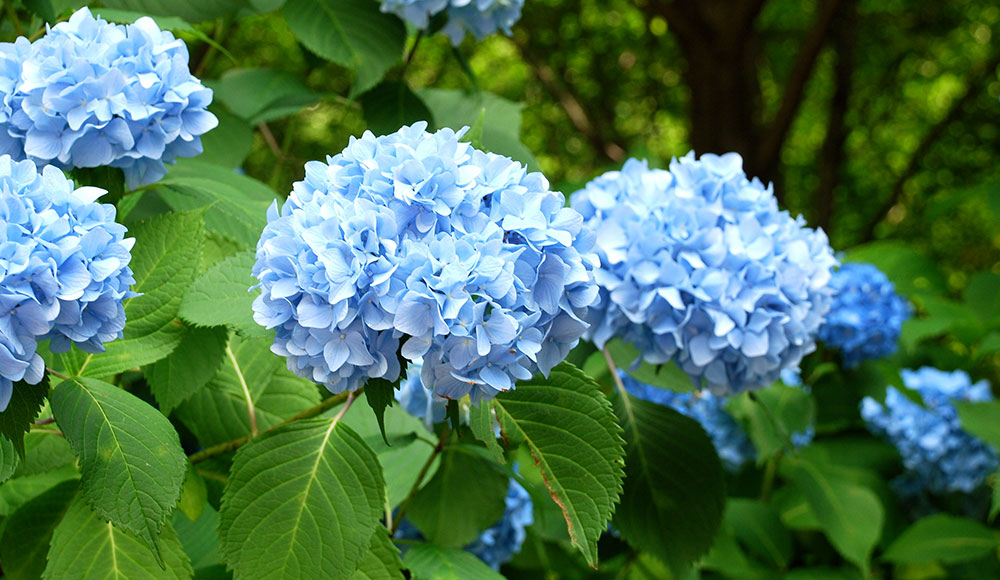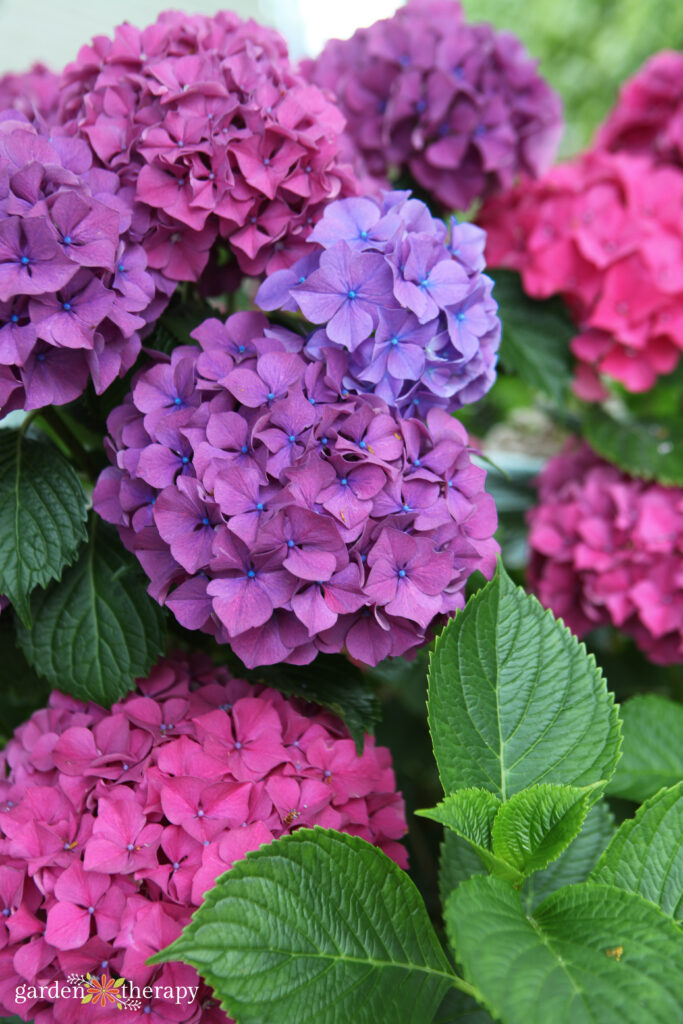Check out this straightforward, foolproof tutorial on how to deadhead hydrangeas to reap the rewards of healthier, more beautiful flowers.
Are you unsure about the proper way to deadhead hydrangeas? You are on the right track, though, as the best benefits come from correctly deadheading your hydrangeas. We do, however, have a better answer for you.
In less than 30 minutes, you can master the art of deadheading hydrangeas with the help of our clear and straightforward guide. So, take a quick look at this game-changing method on deadheading hydrangeas if you want to eventually transform the aesthetic appearance of your hydrangea landscape.
Table of Contents
Why Deadhead Hydrangeas?
It’s crucial to deadhead hydrangeas to keep their blooms bigger, healthier, and more beautiful throughout the blooming seasons. Deadheading, however, differs from pruning.
While deadheading just concentrates on the plant’s blooms (flowers), pruning concentrates on the entire hydrangea bush, helping to shape and maintain its size.
Deadheading is the practice of removing wasted blooms from plants so that the plant can concentrate its energy on developing its roots and flowers rather than on producing seeds.
You maintain the plant looking neat and tidy by deadheading the flowers that are on the verge of fading and wilting (they become brown). Additionally, by removing the dead flowers, you enable more enhanced flower growth for the following blooming cycle.
Some gardeners decide against deadheading their hydrangeas. The plant is not seriously harmed or has any issues as a result of this. However, it will undoubtedly restrict the number and size of flowers that can bloom during the following cycle. To put it simply, deadheading your hydrangeas enables them to blossom to their fullest capacity the following season.
What To Know Before Deadheading Hydrangeas
Before beginning the deadheading process, you must have a few essential items. Here’s what matters:
The Type of Hydrangeas To Be Pruned
The kind of hydrangea you want to deadhead will impact a number of things, including when is the optimal time to do so. Big leaf hydrangeas in variations like mophead or everlasting summer are some of the typical types that may be found in many homes.
Big leaf Hydrangeas
Big leaf hydrangeas typically produce larger flowers, which can occasionally reach dinner plate size. In fact, because it enhances their aesthetics and elegance even more, their larger, showier size is what makes them a popular variety among gardeners.
In order to eliminate faded blossoms when the new blooms start to emerge, big leaf hydrangeas should typically be deadheaded before July (around late winter or early spring). It is advised to deadhead the flowers now because doing so will protect the new buds from the final spent blooms from last fall.
Since the stems of big leaf hydrangeas have a tendency to retain moisture that freezes during the winter, the risk of damaging the younger buds is present, the spent flowers serve as insulation during the winter to protect the buds from frost damage.
Additionally, taking away the old blooms in the fall or winter may also take away the bids, leaving the plant with nothing to develop into blooms.
Smooth Hydrangeas
Smooth hydrangeas are yet another well-liked hydrangea type. These kinds typically come in a variety of hues and feature smaller, clustered flowers. Smooth hydrangeas should be deadheaded as soon as you see the greening of faded or wilted blossoms.
Lace Cap Hydrangeas
Lace cap hydrangeas, a more resilient cultivar, can also be deadheaded whenever before the end of the summer. In fact, it is suggested that you cut the flowers as soon as you see that they are fading. By doing this, the plant switches its focus from producing seeds to producing flowers and roots.
The Right Deadheading Time
Although some kinds exhibit minor differences, late winter to early spring is the ideal time to deadhead hydrangeas.
You should keep deadheading the flowers throughout this period whenever you see them turning brown or fading, depending on your plant. The optimum growth and appearance are encouraged by this ongoing procedure.
However, you should stop deadheading hydrangea plants in the middle to end of the fall. The plant is shielded from winter damage by not being clipped during this period.
Mulch can even be used to protect it from frost. The buds that will bloom in the spring of the following year are left in place when you stop deadheading around mid-fall.
Step-by-Step Guide to Deadheading Hydrangeas

A straightforward how-to for deadheading hydrangeas is provided below;
Tools Needed
- tidy cloth ( for wiping the shears)
- Denatured booze
- pruners or shears (with dual sharpened blades for easy cutting)
- Large bucket for flower disposal
- a set of gloves for gardening (to protect your hands)
Step 1: Prep your Tools
Start by using the cloth to wipe the pruner blades (soak the cloth in alcohol first). The task is made simpler and more efficient by using pruners that resemble a pair of scissors. It is simpler to cut through the stem (up to half its diameter) and cover huge spaces thanks to the two sharp blades (can handle bigger flowers).
However, cleaning the pruners before you begin deadheading aids in preventing the transfer of any diseases or pests from one stem to the next. It also increases the shears’ longevity. The blades will need to be cleaned after each stem cut.
Step 2: Deadhead the Hydrangeas
Holding a flower or flower cluster, track your way down toward the stem until you reach the first set of large leaves after cleaning the pruners one at a time. To get rid of the blooms, make a precise cut just next to the set of leaves.
This kind of bloom removal enables the plant to start fresh, better development. Repeat the process with the unpruned blooms until you are happy with the results, then wipe the pruner blades clean with the cloth dipped in alcohol.
As was already stated, deadheading your flowers does not guarantee that the plant will bloom again later in the season. To guarantee that all of the flowers bloom and get fuller, this step merely gets the plant ready for the following blooming cycle. So, you must wait till the following season to experience a new and beautiful display of full flowers.
How To Deadhead Hydrangeas In Pots
The procedure for deadheading hydrangeas in pots is the same as for those in a garden. Keep in mind that hydrangea plants get tall and bushy. Therefore, you should deadhead the flowers as much as you prune the entire plant to preserve a lovely and healthy appearance for both the plant and the blooms.
FAQS
Do you still have questions about deadheading hydrangeas? To find the answers you’re looking for, look over this section of the website devoted to frequently asked questions about the subject.
Should I Cut The Dead Blooms Off Hydrangeas?
Yes, you should remove the hydrangeas’ dead blossoms. Contrary to popular belief, trimming off the spent blooms from hydrangeas promotes new, healthier growth.
The plant can spend its efforts on developing healthier roots and fuller blossoms during the following bloom cycle by removing the older and dead blooms. To avoid upsetting the new growth, you must trim the blossoms at the proper period.
Also look into why my hydrangeas are wilting.
When Should I Cut Dead Blooms Off Hydrangea?
Hydrangea dead blooms should be removed as soon as you see them withering, browning, drying out, or fading. This is typically a subtle indication that the plant needs to be pruned and deadheaded.
Although different Hydrangea kinds may have slightly varied times, you should generally deadhead your plants in late winter or early spring.
Avoid pruning hydrangeas while they are in bloom from mid-fall to winter since you might destroy buds that would have bloomed the next year. Furthermore, leaving the elder blooms in place over the winter provides an additional layer of protection for the buds against frost.
Will Hydrangeas Rebloom If Deadheaded?
Hydrangeas do not rebloom when deadheaded. Deadheading these flowers is not intended for this reason. Hydrangeas often only bloom once every season (you may find very few unusual varieties that will rebloom later in the season to produce another set of flowers on new stems).
However, deadheading the flowers of typical hydrangea cultivars does not encourage reblooming. Instead, the procedure assists in getting the plant ready for bigger, more gorgeous flowers that will bloom to their maximum capacity in the upcoming bloom cycle (in another season).
What Happens If I Don’t Deadhead Hydrangeas?
If you don’t deadhead your hydrangeas, the plant won’t suffer any serious injury. You can, however, restrict the flower’s growth.
Hydrangeas won’t produce as many flowers if the deadheading process is skipped, and the ones that do might not grow as large. However, even if you don’t deadhead, your plant will still produce blooms the following flowering cycle.
Should I Deadhead Hydrangeas In Summer?
Hydrangeas can still benefit from deadheading throughout the summer. In general, it is suggested that you deadhead your flowers in the late winter and early spring.
However, deadheading is not a standalone procedure. Therefore, you may carry on doing so all through the blooming season. In the end, the better your plant is prepared, the better the flowers will develop throughout the following blooming cycle.
But from mid- to late-fall through winter, you should discontinue deadheading dead blooms. During this time, if you see any wasted blooms, let them alone because removing them can also harm buds designed to bear blossoms the following season. Furthermore, the buds are shielded from winter frost by these withered blossoms.
Can I Deadhead Hydrangeas In Winter
Deadheading hydrangeas in the winter is something you should avoid doing. In order to protect the plant’s final spent blossoms, you should ideally stop deadheading during the beginning to middle of the fall season. The buds underneath are well protected from the cold and frost by the extra layer of insulation provided by these wasted flowers.
When the last of these spent flowers are removed, it’s possible that the buds that will eventually blossom again will also be lost. Instead, cutting back on these final spent blooms at the end of winter or the beginning of spring encourages the growth of healthier buds, which in turn result in fuller, more attractive flowers.
Extremely cold climate residents even wait until winter is fully over before removing the spent flowers, removing even the tiniest chance that the buds will be harmed by the lingering effects of frost and cold.
How To Deadhead Mophead Hydrangeas
Mophead hydrangeas should be deadheaded one at a time by grasping the flower and tracing your fingers down the stem until you reach the first big leaves.
To remove the blossoms, make a precise cut slightly above the leaves using dual-blade pruners. Big leaf hydrangeas include hydrangeas with mopheads. Therefore, they require the same routine deadheading as other big leaf hydrangeas.
Conclusion

After all, this straightforward trimming procedure aids in encouraging healthy growth. However, in this situation, simply knowing where to cut the flowers is insufficient.
You need to arm yourself with additional critical ideas related to cutting dead hydrangea blooms. You must also be aware of the precise variety of hydrangeas you are working with. You also need to know when it’s appropriate to deadhead hydrangeas and when you shouldn’t.
